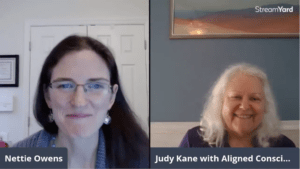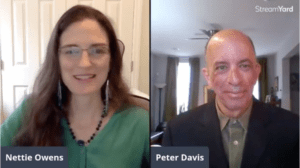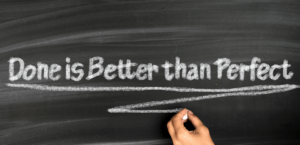What do we, as business owners, need to be focusing on in order to cultivate connections?
If we think about our business, and whether it’s five people or 500,000 people at our company, without our employees, without our team members, we cannot execute the work. We can’t accomplish it.
And whenever you look at your balance sheet, what’s the biggest line item on there? Our salaries and our people in most instances. So, let’s make sure that we take care of our people.
Whenever we think about how to do that, we have to lead by example. If I’m going to walk the walk, I’ve got to talk the talk as well. If I say it’s important to take care of one another, then do that. Suppose I say it’s important to learn, engage, share information, and have this culture of cohesive collaboration. In that case, as a leader of the organization, I need to make sure that I’m doing this on a daily, weekly, and monthly basis.
There’s something that some of the executives at Walt Disney World used to talk about that I read in a book a few years ago. They would never walk past a piece of garbage on the street at Walt Disney World. Because if any of the other cast members would ever see one of the leaders walk past a piece of trash, they’d say, “Oh, it’s okay if I walk past that piece of trash myself.”
It’s important to lead by example because you never know who’s watching. So it’s always important to do the right thing. By taking care of your people, we’re able to lay that foundation for everything else to take place from there.
“When you are busy growing a business and leading people, it can be easy to forget that we need to exemplify the qualities that we’re asking our team members to display. If you don’t do this, it will be hard for them to step into those roles.”
What inspired you to take that step and develop Lattus?
The tool is called Lattus, and I’m fortunate to have some really smart people around me and throughout the Lattus organization that developed the code for this software.
Lattus came to be in March of 2018. Because I had grown up on the farm, I loved connecting with people. So throughout my academic career, studying mechanical engineering and traveling abroad in Hong Kong, and during my athletic career playing sports all over the country and Hong Kong, I met people from all over the world. And then into the professional world, like working at Lockheed Martin, I realized that the power of people helping people could springboard you personally and professionally.
Sometimes you need a mentor, an ally, a sponsor, an accountability partner, somebody to get some insight or perspective from, and it’s tough to find those individuals. I don’t always know what people want to talk about. I don’t know who’s willing and able to have this conversation with me. I don’t know if they’re going to accept my friend request or reply to my message. And I don’t know how to track those conversations over time. So, I’m a big notebook person. But sometimes I have to go back and say, “Shoot… when’s the last time I talked to Nettie? What did we talk about?” And there’s not a great way to do this. There are plenty of tools out there that started this process of connection. But this was something I was struggling with throughout my teens and early 20s.
Then in 2018, I decided, “Hey, I’m having one or two of these conversations a day, and I don’t have enough time to help everybody. I don’t know all the answers, and we’ve got to solve this problem.” I wanted it to look something like making it easier to connect and store your interest in what you want to talk about, learn, and teach. We’re not single-dimensional individuals. And it takes LinkedIn to the next level. Because while LinkedIn shows where I worked, what I studied, and where I studied, for example, I studied mechanical engineering twice – I don’t really want to talk to people about mechanical engineering.
So, on March 4, 2018, I drew a line in the sand and started this company. At that time, I didn’t know what it was going to be called. I didn’t know how to start this company. But there was a gap that needed to be filled to bring people together in a meaningful, intentional, and easy-to-use manner.
“I love that so much focuses on that relationship development here. This isn’t a sales tool. It’s for building relationships and getting the resources you need when you need them.”
What is mentorship?
Mentorship is sharing insights, perspectives, and experiences in this ongoing relationship of somebody with more experience sharing it and handing it off to somebody with less experience. Notice that I said “experience” – not age. I can have a mentor that’s younger than me, age-wise; I can have a mentor that’s older than me, age-wise. But most importantly, mentorship is not one size fits all. These are people that are invested in you. They’ve been in your shoes before. They want to see you succeed. Oprah says a mentor is somebody that helps you see the hope inside of yourself. So, they are not going to create us in their image.
For example, Nettie and Pete have a mentoring relationship. The idea is not for Nettie to create Pete into another Nettie. Instead, it’s to say, “Hey, Pete, it seems like this is where you want to go; try this.” It’s to guide them.
Think of it like you’re on a path in the jungle, and if you don’t have a guide, maybe you can make it to where you need to go at some point, but it’ll take you a little bit longer. You might fall down a few more times along the way. You might take a few wrong turns. But you could get there. But when your mentor comes in, they say, “Hey, let’s take this path,” – they’re not going to make your life easy. It’s not going to guarantee automatic success. It’s not going to be a snap of your fingers, and you’re at the top of the mountain or the other side of the jungle. But it’s a way to make your life easier.
And again, going back to those relationships, it’s more than what you know; it’s also who you know. My mission is to find the who and learn the what; it’s not an “either-or” – it’s a both.
3 Action Steps
- Take care of your employees/team members by leading by example. Make sure you are “talking the talk and walking the walk.”
- Know that Lattus is a tool for developing relationships, not for sales.
- Understand that mentorship is about sharing insights, perspectives, and experiences with someone with less experience in order to act as a guide for them
Connect with Pete Schramm on LinkedIn.
Please comment below. I would love to hear from you.














No comments yet.